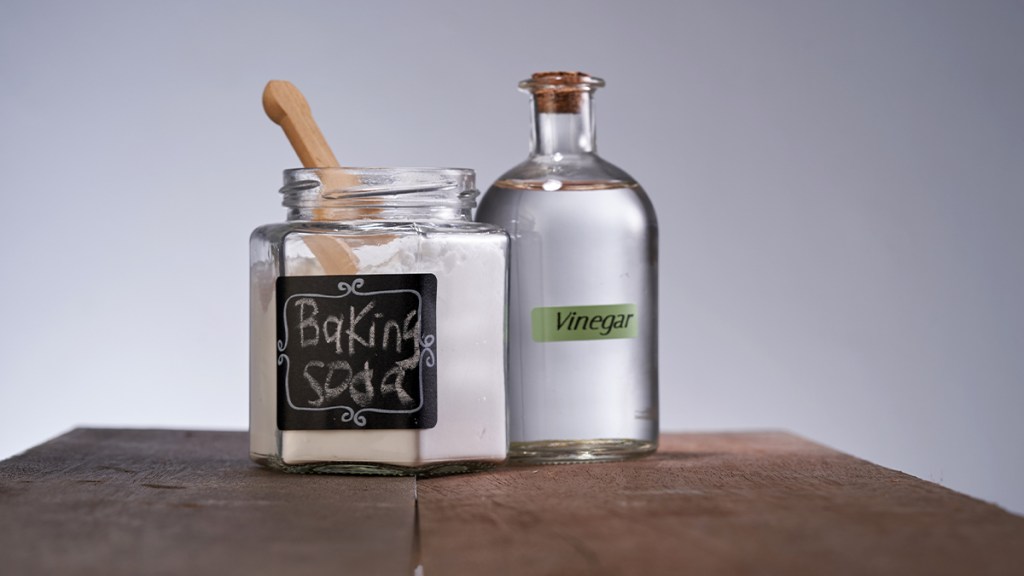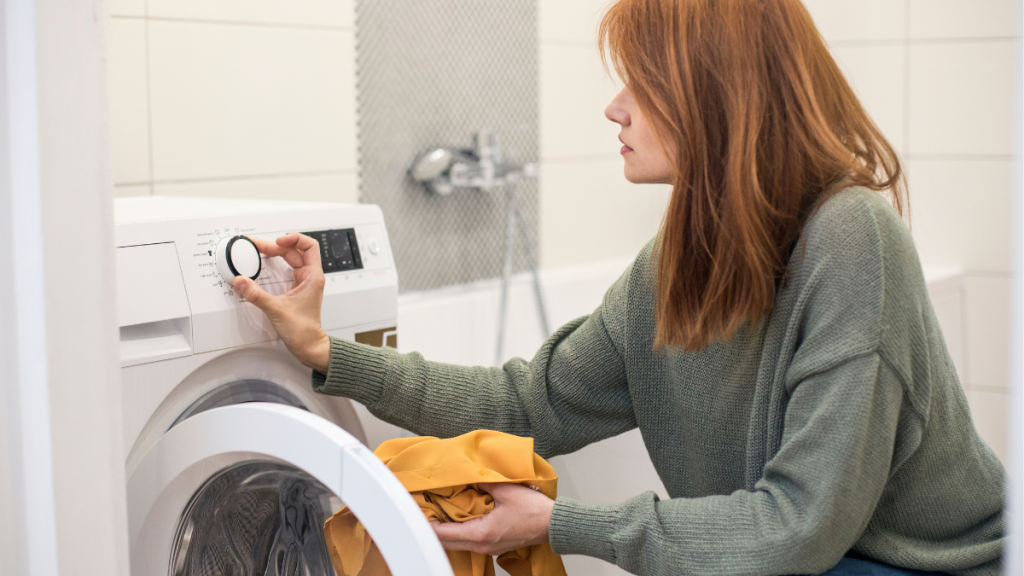How to Remove Sticker Residue From Clothes Without Damaging Fabric in 3 Easy Steps
Plus, the freezer trick that works wonders

Maybe you attended a networking event where you donned a name tag on the corner of your shirt, or perhaps one of the little ones in your life came home from school covered in colorful stickers, and when you went to remove them from your clothes, they left behind a sticky residue. Since tossing the clothes into the washer and dryer doesn’t always remove it, we asked cleaning experts how to remove sticker residue from clothes. Turns out, you can do it easily with basic and inexpensive household products.
How to remove sticker residue from clothes: 3 easy steps
According to Angela Brown, host of the Ask a House Cleaner Show, “Sticker residue can leave permanent stains on fabrics if not treated properly before washing. Certain adhesives have dyes or chemicals that can discolor fabric or cause the area where the sticker was to stiffen and the fabric to become brittle.”
That’s why experts recommend gently removing the sticky item and spot-treating the residue as soon as possible before putting the clothes through the washer and dryer to avoid letting the residue sit and become more ingrained in the fabric fibers or spread on to other clothing while in the wash. Otherwise, adhesive will likely be more difficult to come out of the clothes.
Step 1: Scrape it off
Though not necessarily required, you can start by removing as much excess residue as possible with your fingers, a plastic scraper like the edge of a credit card, a spoon or even a blunt knife.
Step 2: Spot treat it
A number of household products can do the trick. But it’s important to keep in mind: You never want to take an aggressive approach to remove sticker residue that might really damage your clothes. Slow and steady wins the race in this case, and experts highly recommend taking your time having patience.
“You should always consider the fabric type and how delicate or sturdy it may be,” says Maria Mooney at Truly Free. “It’s important to use a more gentle removal method for silk clothing, for example. On the other hand, denim jeans can withstand more abrasive scrubbing. Some fabrics will have a sensitivity to harsh chemicals and ingredients that can damage the appearance of the clothing.”
For more delicate fabrics like silk or satin, Tanu Grewal, chief cleaning officer at Pinalen, Cloralen and Ensueno Laundry, recommends milder solutions diluted with more water, adding that you should avoid using abrasive materials like steel wool or rough brushes to scrub the residue off. For those tougher fabrics like denim, Grewal says they can usually withstand stronger cleaning agents like rubbing alcohol.
Laundry pros generally encourage avoiding harsh chemicals like bleach and testing out any of these methods on a small, less conspicuous area of your clothes before targeting a larger area to ensure that no significant damage or discoloration takes place.
Here, 5 ways to spot treat, depending on what you have on hand.
Have rubbing alcohol?
Rubbing alcohol can help break up sticker residue from clothes. Brown says the product can even work to break down already washed and dried fabrics with sticker residue without damaging them and suggests applying a small amount of rubbing alcohol to a clean cloth and gently dabbing at the residue until it starts to lift.
Watch alcohol remove sticker residue from clothes in this YouTube video from Clean Freak & Germaphobe:
Have cooking or coconut oils?
Vanessa Terra Bossart, owner of Green Terra Cleaning, swears by cooking oil for removing sticker residue from clothes. “Just [place] a little dab of it on the sticky spot, let it sit for a few minutes and watch the magic happen. The oil works wonders by gently loosening up that adhesive mess,” she says. “Then, with a bit of gentle rubbing using a soft cloth or an old toothbrush, you’ll see that residue vanish before your eyes.”
Bossart also adds that the oil can even help condition the clothes a bit, so they come out of the laundry cycle soft and fresh. Concerned about oil leaving stains on clothes? Bossart says the key is to use the oil sparingly and to blot any excess oil before washing. It can also be helpful to use a grease-fighting dish soap directly on the oil-treated area before laundering.
Have vinegar?
Brown also suggests using white vinegar to remove sticker residue from clothing or fabric. Brown recommends soaking the clothes in the vinegar for 15 to 30 minutes and then washing. The amount of acetic acid in household vinegar is typically around 5 percent, which, she says, is mild enough for brief soaks.
Related: Get Rid of Stubborn Stickers With a Dollop of This Fridge Staple
Have baking soda?
Baking soda can be combined with other household ingredients — cooking oil, coconut oil or even just water — to create a mixture that helps remove adhesive. Experts suggest mixing baking soda with one of these items in equal parts to create a paste and applying it to the residue before letting it sit for around 15 minutes. Then, use a soft cloth or toothbrush to mix it into the fabric gently. You can rinse and repeat if needed, for which Mooney recommends cold water.
Dan Dillon, founder and CEO of CleanItSupply, recommends a coconut oil and baking soda mixture, explaining that coconut oil contains fatty acids that help dissolve the adhesive while baking soda adds a mild abrasive action that shouldn’t harm the fabric.
“After approximately 30 minutes, you can use a plastic scraper or a credit card if the sticker is thick, to gently lift away the residue,” Dillon adds. “Then, I’d use a soft cloth or sponge to wipe off the mixture, again being gentle to preserve the fabric. Launder the item using a mild detergent and on a temperature setting appropriate for the fabric type.”

Jonathon Reckles of CD One Price Cleaners suggests combining rubbing alcohol, vinegar and baking soda and applying a small amount to the sticky area to help break up and loosen the residue. Then, he says, wipe away the glue with a wet cloth or sponge and rinse the clothing in cold water to remove any remaining residue.
Have pine oil cleaners?
Grewal prefers multipurpose cleaners containing pine oil, as these products have grease-fighting capabilities that can serve as anti-stick agents. The product should be diluted with some water and gently blotted onto the residue with a clean sponge, Grewal explains, and then you can let it sit for a few minutes before using the cloth or sponge to carefully rub the area. If any stains persist, Grewal says, you can use a color-safe stain remover — ideally one that is vinegar or hydrogen peroxide-based — before laundering.
When in doubt, freeze it:
If you just don’t have any of the above solutions on hand, or you need to figure out how to remove sticker residue from clothes that have been washed and dried, Mooney recommends placing the clothes in a plastic bag and chilling it in the freezer for a few hours before using a dull knife or spoon to scrape the hardened residue off.
3. Wash and dry the clothes

Whenever possible, laundering clothes that had sticker residue on them should be the final step of the treatment process, and you should repeat the pre-wash and wash processes as needed to ensure all residue is removed before placing the clothes in the dryer. In any case, always carefully follow the washing and drying instructions for the garment, use cold to lukewarm water and try to opt for a mild detergent.
Before laundering, Bossart suggests gently blotting away any excess from the treatment with a paper towel, and then washing in cold water and a gentle, non-toxic detergent as hot water can set remaining residue or oil. Air drying is preferable post-treatment, she says, adding that the heat from the dryer can set stains.
Grewal emphasizes the importance of checking care labels before applying any pre-treatment or washing with a new type of detergent.
There are some adhesives and fabric types that also won’t respond well to heat, so exercise caution before trying methods that involve applying heat from an iron or a hairdryer to the source, as they can set or spread the residue further into the fabric in some cases.
Click through these stories for more guidance on removing stains from your clothes:
Got Gum Stuck on Your Clothes? Here’s Why You Should Grab the Peanut Butter!
How to Remove Toothpaste Stains From Clothes: Laundry Experts’ Fast Fixes
Laundry Pros Reveal the Best Ways to Get Slime Out of Clothes — Even If It’s Caked On!

















